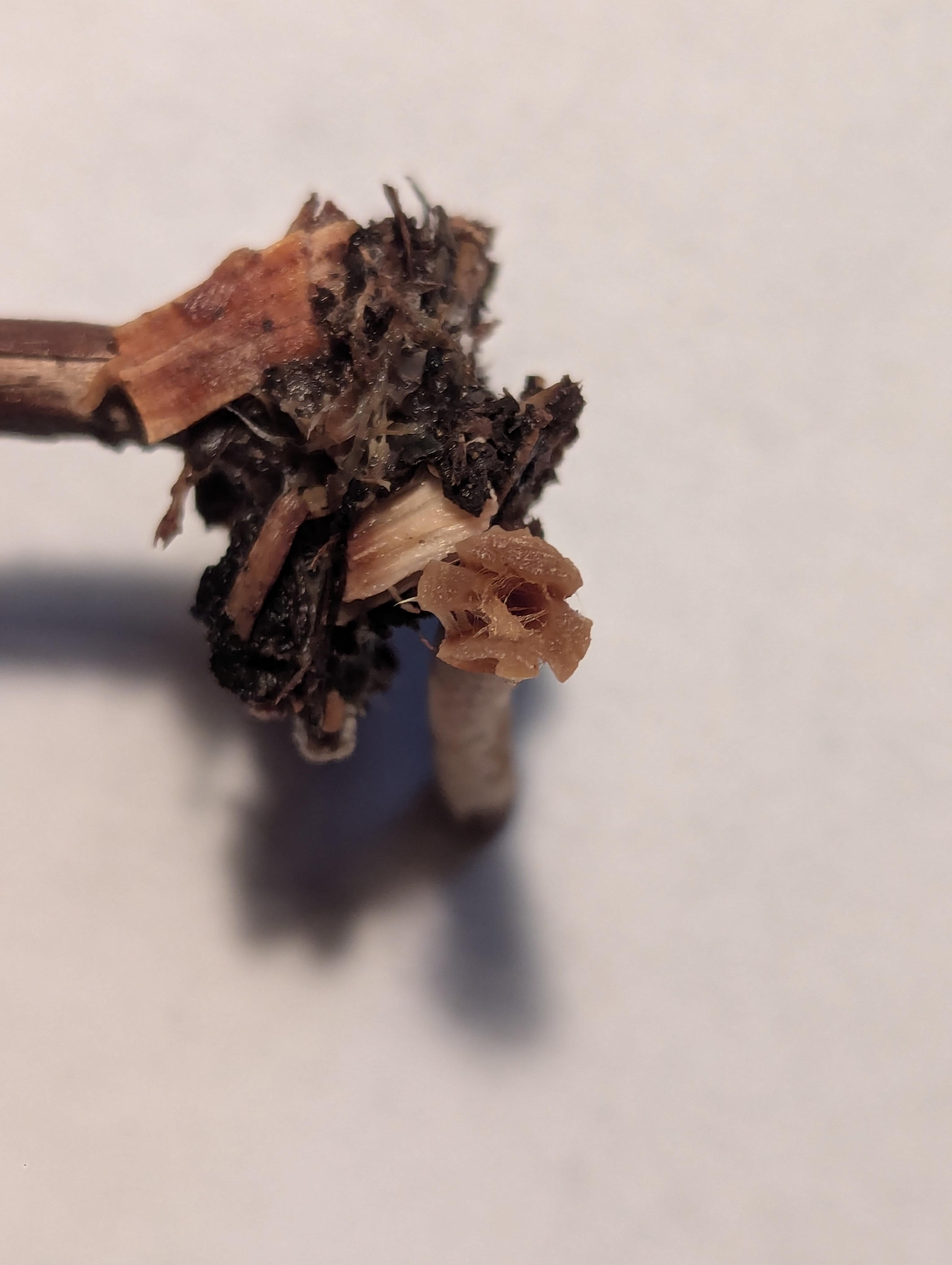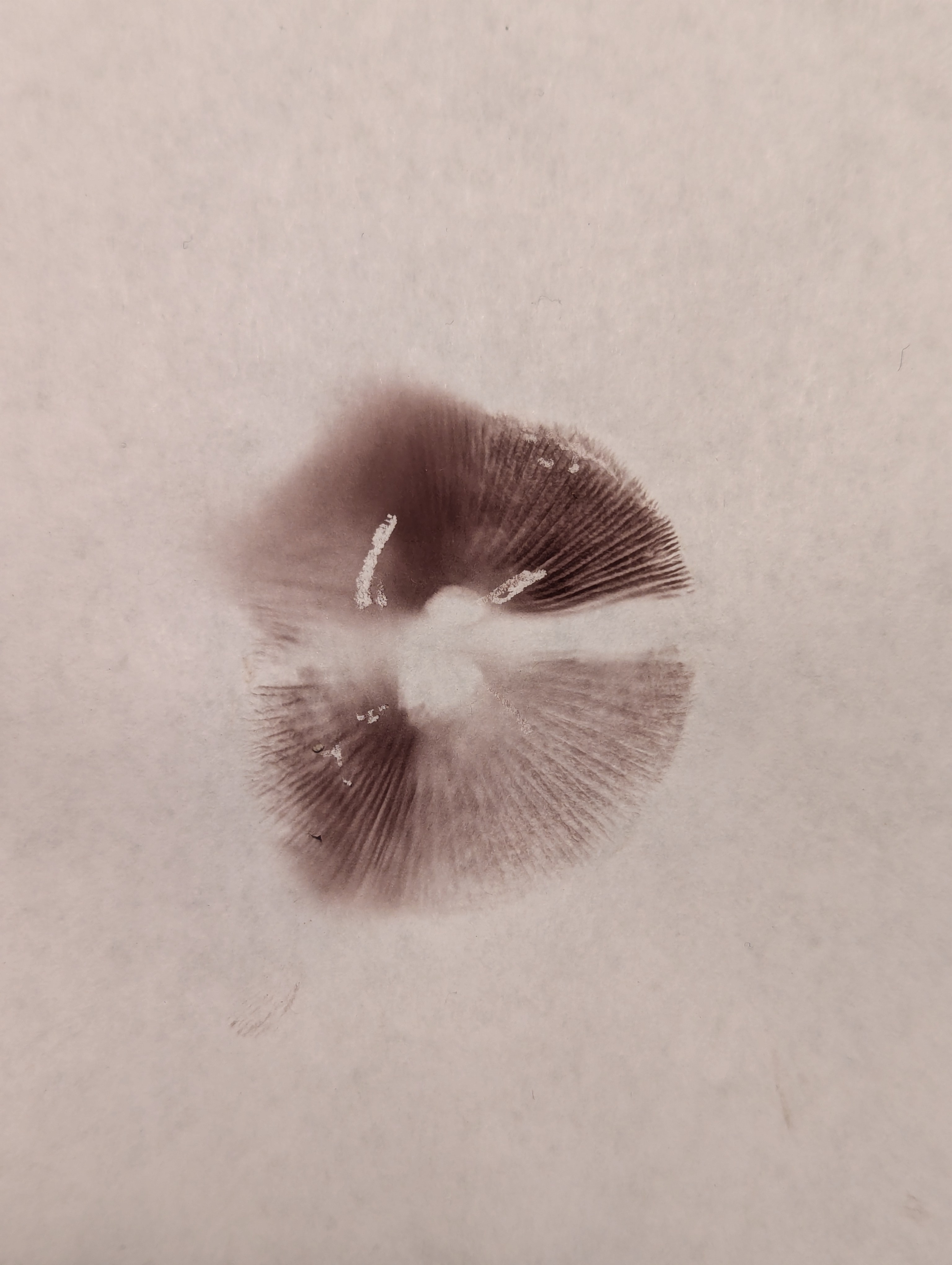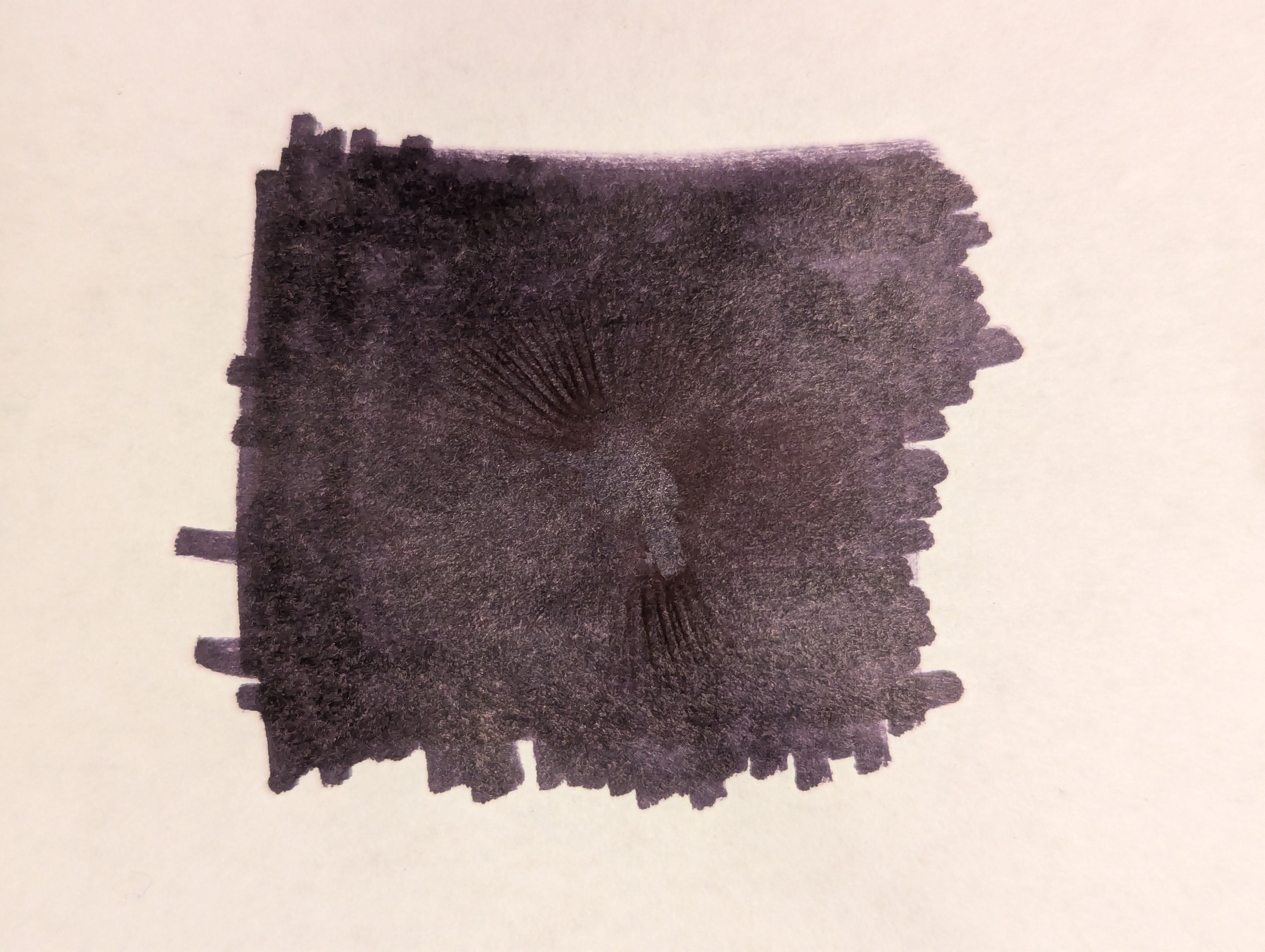View the spoiler for my guess at what I think it might be, but please first come to your own conclusion before looking at mine — I don’t want to bias your guess.
My guess
Psilocybe cyanescens
They were found in mid-november in the Salish Coast region of Cascadia. They were growing out of woodchips composed of a mixture of western hemlock (majority), and western red cedar.
Side view of one full mature specimen:

A group with a sample of the substrate (the cap appears to be umbonate):

A closeup side view, and internal view of the stem (it appears to be hollow):


Cross section of the gills — they appear to be adnate, or sub-decurrent:

Underside of view of the gills:

Spore print (first on white background (the split is due to two halves), second on a black background):


Examples specimens once dried:


Examples of the colony, and the location/substrate in which it was growing:


Cross-posts:


I do at least completely agree with you that pure book knowledge isn’t sufficient — one needs a means of comparing their identification with something that can positively confirm the identification’s accuracy. I think we just differ in that you believe that the only means of doing this is through an in-person meetup with a mycologist, whereas, while I agree that that is likely the most efficient, there are other feasible means of arriving at a confirmation; the most extreme of which would likely be something like sequencing the DNA of the mushroom, for example.